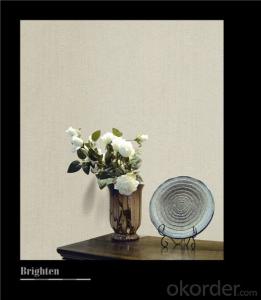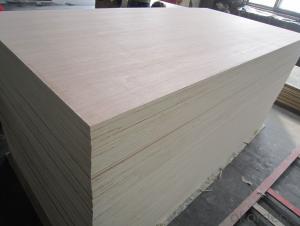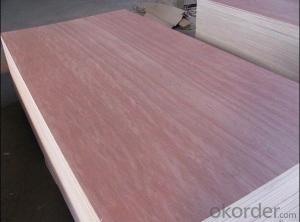1 Inch Thick Aluminum Plate
1 Inch Thick Aluminum Plate Related Searches
Led Light Bulbs For Ceiling Fixtures Led Lamps For Ceiling 42 In Ceiling Fan With Light Aluminum Coil Stock For Gutters Aluminum Foil For The Grill Hole Saw For Aluminum Plate Aluminum Tread Plate For Trailer Bow Plate For Aluminum Boat Aluminum Foil For Grow Room Aluminum Foil For Joint PainHot Searches
Stock Price For Aluminum Aluminum Coil Stock For Sale Aluminum Gutter Coil For Sale Used Aluminum Scaffolding For Sale 1/4 Aluminum Plate For Sale Aluminum Bar Stock For Sale Aluminum Round Stock For Sale Aluminum Diamond Plate For Sale Aluminum Scaffolding For Sale Craigslist 6061 Aluminum Plate For Sale Aluminum Dock Plate For Sale 7075 Aluminum Plate For Sale Aluminum Tread Plate For Sale Aluminum Checker Plate For Sale Aluminum Plate For Sale Near Me Plate Aluminum For Sale Aluminum Plate For Sale Aluminum Square Stock For Sale Aluminum Flat Stock For Sale Billet Aluminum Stock For Sale1 Inch Thick Aluminum Plate Supplier & Manufacturer from China
Okorder.com is a professional 1 Inch Thick Aluminum Plate supplier & manufacturer, offers integrated one-stop services including real-time quoting and online cargo tracking. We are funded by CNBM Group, a Fortune 500 enterprise and the largest 1 Inch Thick Aluminum Plate firm in China.Hot Products
FAQ
- There are several different grades of aluminum sheets available, including 1100, 3003, 5052, and 6061. These grades vary in terms of their composition, strength, and intended use. 1100 aluminum is the most commercially pure grade and is often used for general purpose applications. 3003 aluminum is alloyed with manganese and has improved strength and corrosion resistance. 5052 aluminum is alloyed with magnesium and has excellent weldability and formability. 6061 aluminum is alloyed with magnesium and silicon and is known for its high strength and versatility.
- I would like to make a boat, Songhua River used to know, tell the answer, good + points!
- Marine yacht with 5083, with 5456 of inland water on it, domestic Park boat 5052 will be used
- There are several methods of surface engraving aluminum sheets, each offering unique advantages and suitable for different applications. 1. Mechanical Engraving: This traditional method involves using a rotating cutting tool, such as a milling machine or a router, to physically remove material from the surface of the aluminum sheet. It is a precise and versatile technique that can create intricate designs and deep engravings. Mechanical engraving is commonly used for signage, branding, and decorative purposes. 2. Laser Engraving: This modern and highly precise method uses a laser beam to vaporize or melt the surface of the aluminum sheet, creating a permanent mark. Laser engraving offers great control over the depth, speed, and intensity of the engraving, allowing for detailed and accurate results. It is widely used in industries like aerospace, automotive, and electronics for part identification, serial numbers, and barcodes. 3. Chemical Etching: Also known as chemical milling or photochemical machining, this process involves coating the aluminum sheet with a photosensitive mask and exposing it to UV light through a stencil or artwork. The exposed areas are then chemically etched, removing the material and creating the desired design. Chemical etching offers high precision, repeatability, and the ability to engrave very thin lines or complex patterns. It is often used in electronic components, nameplates, and decorative applications. 4. Diamond Drag Engraving: This method uses a diamond-tipped stylus that is dragged across the surface of the aluminum sheet, scratching or indenting it to create the engraving. Diamond drag engraving is commonly used for industrial applications, such as part identification and serial numbering, as well as for creating durable and long-lasting markings on aluminum sheets. 5. Rotary Engraving: In this technique, a rotating cutting tool is used to remove the material from the aluminum sheet, similar to mechanical engraving. However, rotary engraving is typically used for larger and thicker aluminum sheets and is often employed in industrial settings for marking, labeling, and identification purposes. Each of these methods has its own advantages and is suitable for different applications, so choosing the right engraving method for aluminum sheets depends on factors such as the desired design, level of detail, durability requirements, and the intended use of the engraved product.
- Yes, aluminum sheets can be laminated. Lamination is a process of bonding multiple layers together to create a composite material with enhanced properties. In the case of aluminum sheets, they can be laminated with other materials such as plastics, adhesives, or even other metals. This process can improve the strength, durability, and thermal or electrical conductivity of the aluminum sheets. Laminated aluminum sheets are commonly used in various industries, including construction, automotive, aerospace, and packaging, where the combination of different materials provides the desired characteristics for specific applications.
- My professor gave us the following:1roll of Reynonlds Wrap Heavy Duty Aluminum18.0 in wide, 500.0 ft long and 0.94mil thickThe cost $48.98and I'm not sure how to figure it out
- length * width * thickness = volume (with some unit conversions) Mass = volume * density (look up the density of aluminum) convert mass to moles. convert moles to atoms Divide the cost by the number of Al atoms.
- Some of the different types of surface treatments for aluminum sheets in the marine industry include anodizing, powder coating, chromate conversion coating, and painting.
- Yes, aluminum sheets can be used for HVAC systems. Aluminum is a popular material choice for HVAC applications due to its many advantageous properties. It is lightweight, making it easier to handle and install. Aluminum is also highly resistant to corrosion, which is crucial for HVAC systems that are exposed to moisture and varying temperatures. Additionally, aluminum has excellent thermal conductivity, allowing for efficient heat transfer. This makes it ideal for heat exchangers and other components in HVAC systems. Overall, aluminum sheets are a reliable and durable option for HVAC systems.














































